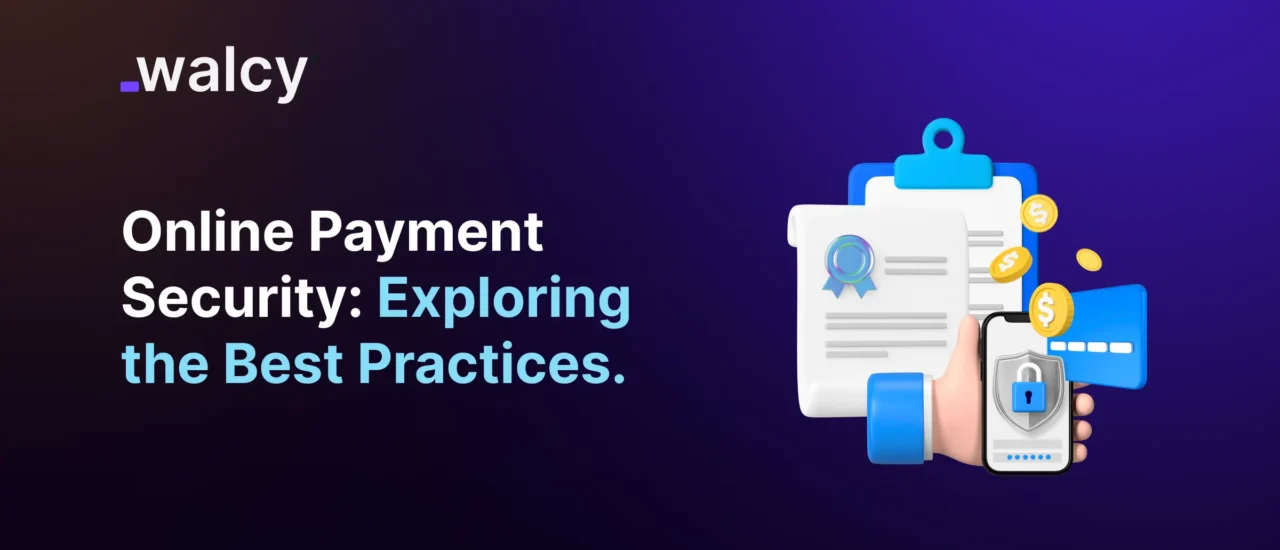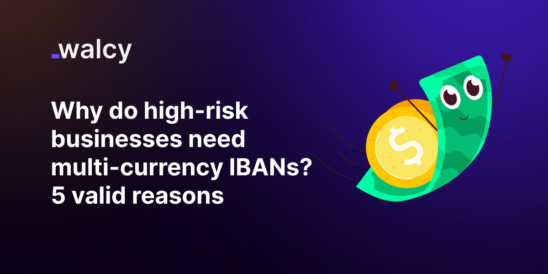Online payment security is one of the main concerns in today’s advanced digital world, both for customers and companies. The rapid rise in e-commerce, mobile banking, and other varieties of digital payments ensures that more stringent security measures are put in place than ever. To protect sensitive information, all parties involved in an online transaction should exercise caution and adhere to best practices, given the dynamic nature of cybercrimes.
This comprehensive guide shall explore the importance of online payment security, discuss the risks associated with online transactions, and provide actionable best practices that assure secure payments online.
The Importance of Online Payment Security
Online payment security involves protection measures during financial transactions over the Internet. More volumes of online transactions mean more vulnerabilities to cyber-attacks. Even a single breach can result in enormous financial loss, an erosion of business reputation, and sensitive data of customers.
Security in online payment predominantly protects consumers against unauthorized access to personal and financial information. This would include details regarding credit cards, bank account numbers, and even personal identification. In businesses, it accounts for consumer trust, being compliant with regulators, and avoiding expensive data breaches.
Understanding the Risks of Online Transactions
Before proceeding to the best practices, it’s good to learn some of the risks that concern online deals. There are several techniques by which cybercriminals seek to exploit vulnerabilities in online payment systems. Some of the most common threats include:
Phishing:
Phising attacks are a form of Internet fraud that involves e-mails or websites from what appears to be a legitimate source; in reality, cyber crooks devise them to intercept sensitive information, such as login IDs or credit card numbers. An attack of this type will easily mislead users as it reflects a valid nature.
Man-in-the-middle Attack:
During a MitM attack, the hacker running the attack intercepts communications between the user and the website or payment gateway. He may then steal or even tamper with the information being conveyed, probably leading to unauthorized transactions.
Malware:
When a malware, in the form of a key logger or Trojan, infects a user’s device, every time the user types sensitive information, it gets captured and relayed back to the attacker who uses it for fraud purposes.
Data Breaches:
A data breach includes unauthorized access to company databases where customers’ sensitive information is leaked. Several large companies have fallen prey to massive breaches that have put them through enormous financial and reputational losses.
Credit Card Fraud:
The hacked details of credit cards can be used to make an online purchase with those cards. For customers and businesses, it may turn into a nightmare since there may be a chance of chargebacks along with financial loss.
Best Practices for Online Payment Security
This requires the implementation of best practices in ensuring online payment security both on the part of businesses and consumers. All these best practices require an integration of technology, education, and vigilance to make online transactions as safe as possible.
-
Use Secure Payment Gateways
As such, e-commerce transactions should be treated as any other Web-based transaction, and a secure payment gateway implemented. The role of the payment gateway would be that of ensuring that the customer’s bank is connected securely to that of the merchant by usually encrypting information so that unauthorized parties cannot have access to it. While looking out for a payment gateway, some of the features any company should be looking out for in such include:
Encryption:
The gateway to the payment should be using the most recent encryption methods, such as SSL and TLS, for any data in transit.
PCI DSS Compliance:
Actually, PCI DSS means Payment Card Industry Data Security Standard. It is defined as a set of security standards maintained for the protection of card information during and after a financial transaction. In this regard, the provider has to give assurance on PCI DSS compliance to a business offering this service.
Tokenization:
It replaces sensitive payment details with a unique identifier or “token,” which, in turn, may be used to execute a transaction without releasing any original data. In such a way, it adds a layer of security by reducing liability in cases of data breaches.
-
Integration of 3D Secure Authentication
For electronic debit and credit card transactions, 3D Secure is an extra layer of protection.
It involves verification that requires another layer of authentication from the holder in the course of the payment. Normally, this is done by entering a password or one-time code sent to his or her mobile device. This helps verify that indeed the transaction was made by an authorized cardholder and reduces risk from fraud.
So far, several major card networks have already implemented 3D Secure, including but not limited to, Visa under the brand name Verified by Visa, MasterCard as MasterCard Secure Code, and American Express as Safe Key. If 3D Secure is implemented, the fraud rates of a business go down drastically and such businesses also risk shift, meaning these are probably not liable for fraudulent transactions.
-
Train Customers on Online Transaction Security
It is also equally important that fraud prevention education is imparted to customers regarding how online transactions are made secure. This would involve clear explanations by businesses on various ways one can recognize and avoid potential threats. Issues to be addressed include:
Identifying Phishing Attempts:
Customers should be provided with educational information on how to identify phishing attempts. Some of the examples should include suspicious URLs, spelling errors, and unsolicited requests regarding disclosure of personal information.
Strength passwords:
Impress strong, unique passwords for all online accounts of customers. The password should be changed periodically. It needs to be composed of special characters, numerals, and alphabets.
Two-Factor Authentication:
Two-factor authentication requires users to provide two types of identification, such as a password and another code sent to their phone, to allow them to access their account.
-
Securing your website with HTTPS
The most basic thing one may do is to ensure that a website is secure enough to mitigate online payment insecurity. Websites with HTTPS or Hypertext Transfer Protocol Secure ensure data sent between browser and server are in encrypted format that stops any attack from intercepting sensitive information.
It entails enabling HTTPS on your website by acquiring an SSL or TLS from a trusted CA. It not only helps encrypt information but also authenticates your website to customers for their confidence in sending their information securely.
-
Regular Security Systems Monitoring and Updates
Since cyber threats change day in and day out, periodic monitoring and upgrading of all your security systems against any attack will be very important. These are some things to include:
Updates to Software: Make regular updates to all software, including website content management system software, payment gateways, or other plugins and extensions. Software updates generally provide patches for security holes that were discovered in earlier versions.
Security Audit: This will involve periodic audits of your systems to detect any possible weak spots in your online payment systems. These may include, among others, vulnerability scanning, penetration testing, and access control review.
Intrusion Detection Systems (IDS): An Intrusion detection system shall be installed to monitor network traffic for suspicious activity and also alert you in case of any possible security breach.
-
Protection against Malware and ransomware
Malware and ransomware are considered to be the biggest evils to the online security of payments. To save your business from such an attack, the following measures shall be availed:
Antivirus Software: Antivirus software installation on every device that shall be used in processing the payments shall be installed. It detects malware and eventually removes it that might be used for hacking all sensitive information.
Firewalls: This would create a virtual wall between the internal network and the possible threats that may come from outside. Firewalls can block unauthorized access and filter out harmful traffic.
Training for Employees: The employees must be trained regarding malware and ransomware risks. They should be able to identify spoof emails and avoid downloading attachments and software that are not verified.
-
Use Secure Payment Methods
To prevent fraud, consumers should pay using secure means. Credit cards are better protected than debit cards since they are not directly connected to a bank account, and several credit card companies have various fraud protection services. A further option may be the consideration of contactless digital wallets, for example, through Apple Pay, Google Pay, or PayPal, adding a layer of security as they tokenize information regarding a payment.
Third-party consumers purchasing products through online websites need to ensure that the payment entry is secure via 3D secure authentication along with other available security features.
-
Data Retention Reduction
Fewer data retained in modes of payment limits exposure to possible data breach incidents. A business should retain only the amount and type of data necessary to complete a transaction and periodically review its data retention policy to make certain it conforms to all legal and regulatory requirements.
Data encryption:
In the case of sensitive information, such as on payments, which needs to be encrypted upon storage, access must not be granted to unauthorized persons. It involves the databases, back-ups, and other storage media holding sensitive data.
Minimization of Data:
The data to be collected should be reduced to the barest minimum to affect any transaction. For example, data that are not required to consummate a certain transaction must not be collected. In other words, data that would never be reused and therefore need not be retained. For instance, a full credit card number is not required in a transaction where it would not be used in the future. Therefore, it must not be retained.
-
Compliance with Regulations
Of course, regulatory standards play a very important role in ensuring security in online payments. In that direction, the business enterprise would have to be aware of relevant regulations and adhere to the same few of these, but not limited to, include:
PCI-DSS:
It stands for Payment Card Industry Data Security Standard and refers to a set of security measures put in place to ensure card information remains secure and safe during and after the processing of any kind of financial transaction involving cards. PCI-DSS compliance is mandatory for any business that processes, stores or transmits credit card information.
GDPR:
The General Data Protection Policy (GDPR) is a policy from the European Union that establishes guidelines for gathering, storing, and using personal data. All organizations operating within the EU or involving data from EU citizens strive to ensure their practices and policies work towards meeting the requirements of the GDPR.
CCPA:
It is the legislation state of the United States that grants the residents of California all legal privacy rights. Whatever business collects personal information from the residents of California is under the requirement to follow the regulations according to the CCPA.
-
Communicate and Provide Customer Service
Finally, online payment security is completed by clear communication and good customer support. The information about the measures taken against security should be well-spelled, and easy access for customers when they feel suspicious or have problems with their transaction should be provided with support services.
Transparency: Publish your security policies and practices on your website; for example, how the customer data is kept safe while making online transactions. This will give a sense of confidence to customers that their information is safe.
Customer Support: Responsiveness in channels of support via telephone, email, or even live chat to attend to customers’ queries and issues revolving around online payments. The sooner and better a problem gets resolved, the less chance one has for security or dispute-related issues.
Read about: online banking security
Conclusion
As far as modern-day digital economy transactions of online payments are concerned; security perhaps remains one of the paramount concerns. The continuous development and unfolding of cyber threats in online credit card transactions pose a big burden on businesses and consumers alike to be watchful and have ideal practices that protect sensitive financial information.
Business alone has to be concerned about the protection of online transaction security by deploying safe payment gateways, educating customers about online purchases, updating periodically the security systems, and strictly conforming to regulatory standards. Consumers also can be proactive to ensure that all purchases are made via secure payment methods, enabling additional authentication, and being aware of the current risks.
In today’s modern world, every precaution to ensure security from online pay has been needed to protect their financial and personal assets.
Do follow us on Facebook and LinkedIn, to stay connected with us.



